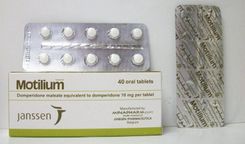This is an automatically translated article.
Carac drug is prepared in the form of a topical cream with the main ingredient in the drug is Fluorouracil 0.5%. So what is Carac drug, what does Carac drug do and how to use it?
1. What does Carac do?
Carac drug has the main ingredient is Fluorouracil, an anti-cancer agent. Carac is used to treat scaly skin overgrowth (actinic or solar keratosis). Carac is also used to treat superficial basal cell carcinoma.
Do not use Carac in the following cases:
You are pregnant: Carac medicine can harm an unborn baby or birth defects. Use effective birth control and tell your doctor if you become pregnant during treatment with Carac. You should not use Carac if you are allergic to Fluorouracil or have a metabolic disorder caused by a DPD (dihydropyrimidine dehydrogenase) deficiency. Women who are breast-feeding should not breast-feed while using Carac. Carac is not approved for use by anyone under the age of 18.
2. Dosage and how to use Carac
Carac is used by the skin route. Read and follow any instructions for use provided with your medicine. Ask your doctor if you do not understand the instructions for use of this medicine. Wash your hands before and immediately after using Carac, unless it is being used to treat a hand condition. Caregivers applying Carac to patients should wear rubber gloves. Apply only enough Carac to cover the affected area with a thin film. Do not apply Carac to irritated, peeling, infected, or open wounds. Wait until these lesions have completely healed before using Carac. Do not cover the treated area with bandages or plastic unless your doctor tells you to. You may need to use Carac for up to 6 weeks. Treated skin may appear undesirable as it heals, which may take several weeks. Store Carac at room temperature away from moisture and heat, do not freeze. Keep the Carac container tightly closed when not in use. Do not use Carac to treat a skin condition that has not been checked by your doctor. Carac Cream should be applied once daily to the affected area of the skin with actinic keratosis, enough to cover the entire skin with a thin film. Carac should be applied for up to 4 weeks if tolerated. Continued treatment for up to 4 weeks resulted in even more damage reduction. Local irritation does not increase markedly with prolongation of treatment by 2 to 4 weeks and usually resolves within 2 weeks of discontinuation of treatment. If you miss a dose of Carac, apply it as soon as possible, but skip the missed dose if it is almost time for your next dose. Do not use 2 doses of Carac at the same time. If you overdose on Carac, call your doctor right away or go to a medical facility for timely treatment. Some things to keep in mind when using Carac:
Do not use Carac on your eyelids or eyes, nose, or mouth. Flush with water or physiological saline if this medicine gets in eyes. Do not allow Carac to build up in the folds of skin around your mouth, nose, or eyes. Use caution when applying medication around these areas. Avoid using other medicines on the areas you treat with Carac unless your doctor tells you to. Avoid exposure to sunlight or tanning beds. Because Carac can make you more susceptible to sunburn. Wear protective clothing and use sunscreen (SPF 30 or higher) when you are outdoors.
3. Side effects of the drug Carac
Get emergency medical help if you have signs of an allergic reaction to Carac, allergy symptoms include: Hives; shortness of breath ; swelling of the face, swelling of the lips, swelling of the tongue, or swelling of the throat.
Carac can cause serious side effects. Stop using Carac and call your doctor at once if you have the following symptoms:
Severe pain or swelling of the skin treated with Carac. Itching, burning, or severe irritation of the skin where Carac is applied. New skin sores appear or old sores get worse. Fever, chills. Severe abdominal pain. Bloody diarrhea. Vomiting. Before your skin begins to heal, it will become red, dry, tender, and scaly. This is a normal skin reaction, even if the symptoms get worse for a short time. Gradually, the dead skin will begin to peel off and you will see rough skin appear. Ask your doctor when to stop using Carac after you notice signs of healing.
Common side effects of Carac include:
Skin pain, itching, burning or irritation. Skin darkening or scarring. Red and swollen skin. Small blood vessels appear under the skin. If you see any unusual symptoms while using Carac, you should immediately notify your doctor or go to a medical facility for timely treatment.
4. Interactions of Carac with other drugs
Carac topical is not likely to be affected by other medicines you use. However, many drugs can interact with each other. Tell your doctor about all medications you are taking, including prescription and over-the-counter medicines, vitamins, and herbal products.
Above is all information about Carac medicine, patients need to carefully read the instructions for use, consult a doctor / pharmacist before using. Note, Carac is a prescription drug, patients need to use the drug as prescribed by the doctor, absolutely do not self-treat at home.













